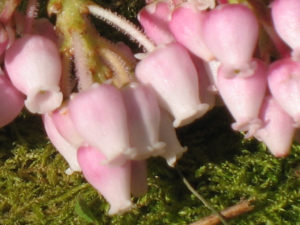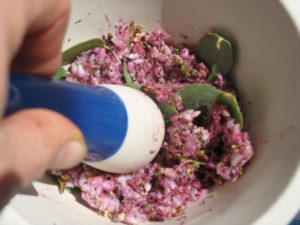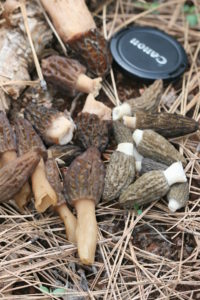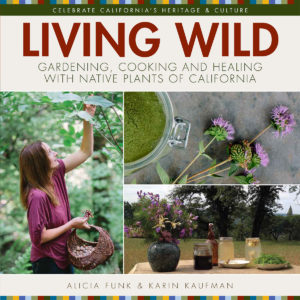Manzanita Blossoms, Miner’s Lettuce and Morels
I’m really feeling the plants response to the growing daylight that we’re receiving as the first day of spring approaches. The Buckeyes have leafed out, many plum blossoms are showing, the green grass is getting taller, and many seedlings have started their annual ascent to flower and seed. The progression of spring is a favorite time for observation for me when new insights occur as I look deeper.
This year I’ve been studying the earliest of the flowers: Alder catkins in January, Bay laurel in February (unfortunately most got quite frosted and may not make many bay nuts), and California Cardamine in March (tasty greens). And yet at my place at 2,400 ft. it may as well be January as the cold and rain does persist and keep things mostly dormant. But I do honor the arrival of Manzanita blossoms and Miner’s Lettuce. One could make a respectable salad of just these two plants. I really appreciate and love miner’s lettuce. In late winter it is the most nutritious food to rival the healthy green power foods available in the health food store and it is so abundant. I can browse in the warm winter sun on all fours emulating a ruminant contemplating this grand nutritional gift from the earth. I come inside with a dark green tongue. What nutrition is in this plant? Beyond an abundant supply of vitamin C it is hard to say. But it is in the Purslane family and Purslane has been shown to contain some of the Omega-3 fatty acids. Maybe miner’s lettuce has more to offer, and it feels like it does.
For thousands of years before the FDA, feeling that it tastes beneficial is how we got by. I have been watching my biggest miner’s lettuce patch slowly diminish in the needle duff. And I am reminded that my Maidu friend Farrel said it likes to be burned off occasionally. I think I will burn the needles in the fall on my best patch. I’ll have a hose nearby and do it before the first big rains but right before a rainstorm to assure the ground doesn’t ignite after I’m gone. I plan to collect seed as well. I enjoy really observing them: tough, beautiful shiny black seeds with an indentation on one side (hence the name Claytonia perfoliata). I’ll need to collect the seeds quickly or they’ll fall out of their singular chambers soon after they mature. There are only a few flowers for each stem so I won’t be gathering multitudes unless I’m really lucky. I will plant them very early, either before the rains or in a dry spell in early winter. I will disturb the ground a bit and bury them very lightly. Probably try to establish some in my garden as a cover crop. I am always so envious of my friends who have it thick in their garden all winter.
Looking forward to the spring mushroom season of course, several workshops are planned to continue the fungus education work I do (See www.yubawatershedinstitute.org for details). I am entranced by the forms of the Morel: fat large naturals, giant late greens, stocky black burn Morels, and tall blonde landscape Morels. I am leaving the taxonomy to the geneticists as it is incredibly variable. It is entirely possible that the form is related to the substrate. The common thread is all the proper Morchella species and varieties (having the classic pits and ridges) are edible. Beware of the morel spawn kits for sale. We have a pretty good consensus among mycologists that they are mostly gimmick. Cultivation of morels is possible these days but the kit only offers a spawn that may as easily die as live. One is better off with local strains sprinkled in the backyard and creating your own habitat. The two best ways to make Morel habitat are laying fresh conifer mulch (chips) in proximity to a garden or moist area. The nutrients are a great lure for the blonde landscape morel in March-June depending on your elevation. I have seen landscape Morels from Anaheim to Truckee. The other technique is to simply burn the forest lightly (on your own land!). This can be a nice way to remove some brush while attracting the black burn Morels to your land. The black Morels prefer some altitude and really fruit best above 2,500 ft. I will end this post with a little quote from Frank Cook who encourages us to “eat something wild every day”.







